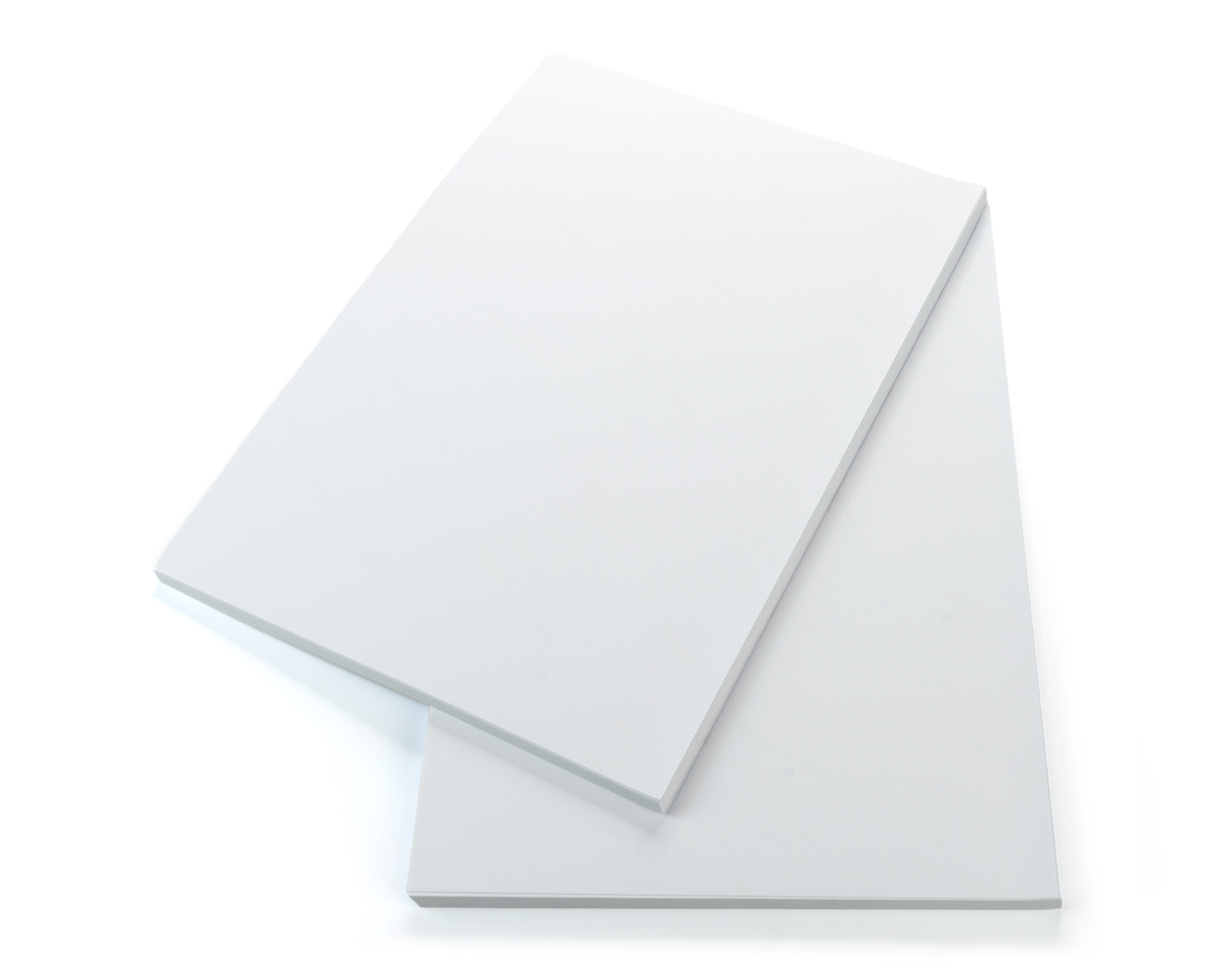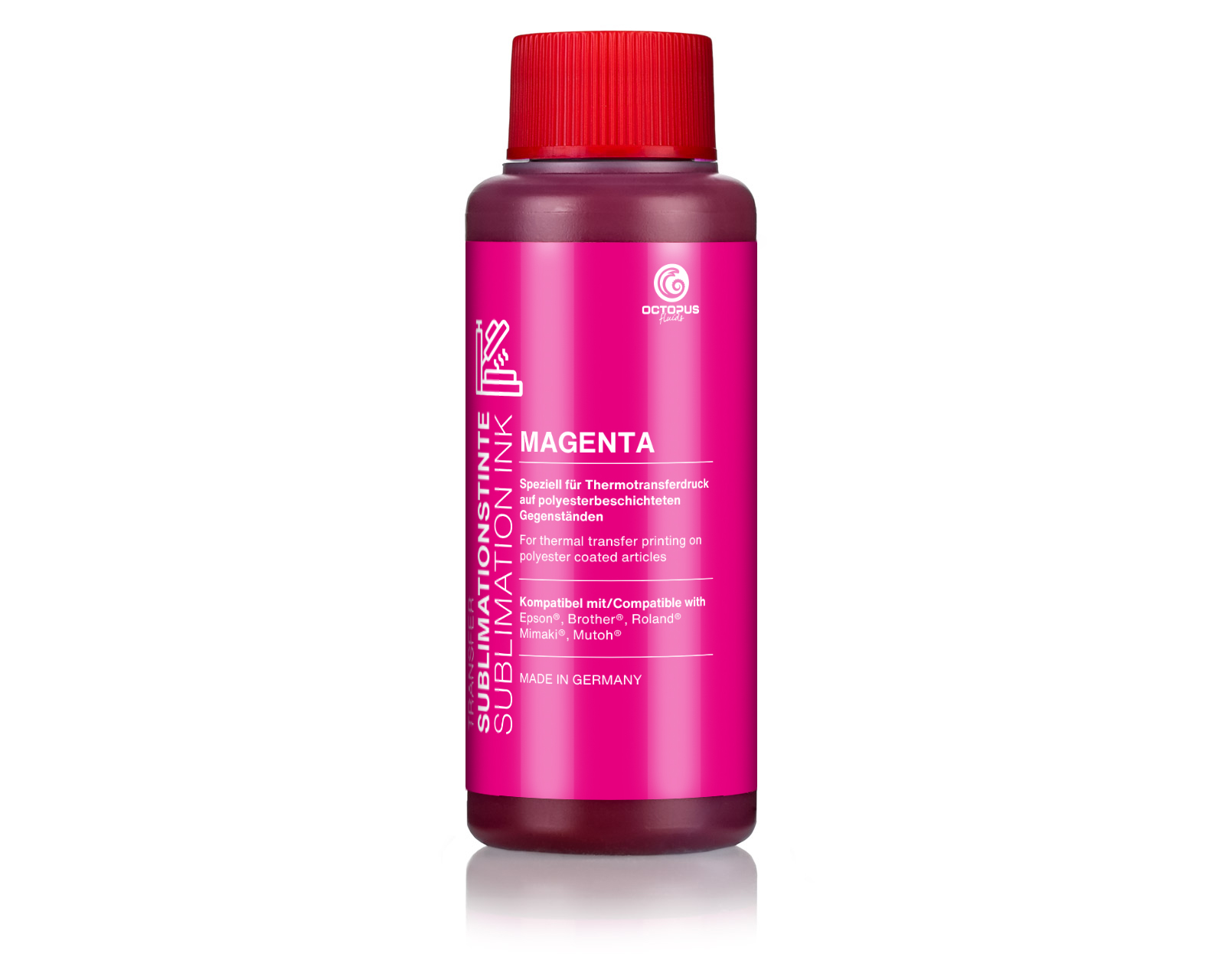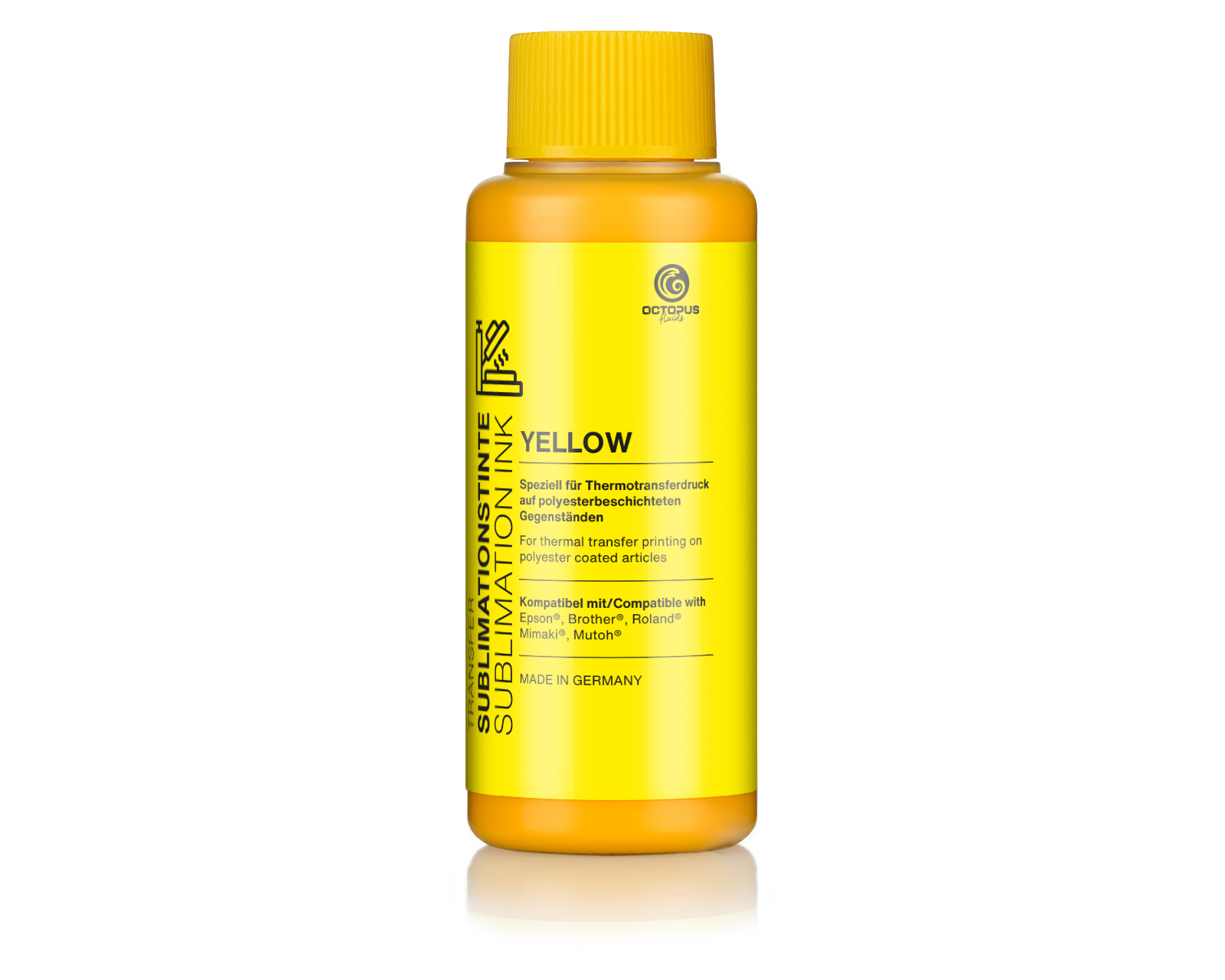Sublimation, sublimation process, sublimation ink

The sublimation process has been used for many years in screen and offset printing for the production of mass-produced goods such as flags, skis, snowboards, etc. Thanks to the development of sublimation inks for piezo inkjet printers, it is now also possible to produce individual items up to large print runs quickly and cost-effectively in top quality. This is how it is done today in countless copy shops and T-shirt shops.
Sublimation is defined as the direct transition from a solid state to a gaseous state, without the liquid state that normally occurs in between.
In sublimation transfer, graphics are transferred to predominantly polyester-coated materials such as cups, textiles or aluminium plates using heat and pressure.
A piezo inkjet printer prints the sublimation ink mirrored onto a transfer paper or sublimation paper and after a short drying time, the motif is transferred to the advertising medium using a transfer press at 180 - 200 C° and light pressure. For this purpose, the printed sublimation paper is placed on the advertising medium. Both together are positioned in the transfer press and pressed under heat. The actual sublimation then takes place during pressing under heat. The sublimation ink and its colourants change into a gaseous aggregate state and thus darken the polyester coating of the advertising medium.
After a short time, the advertising medium has completely absorbed the image. The carrier can be removed from the heating press and freed from the evaporated sublimation paper. The image or lettering is now transferred.
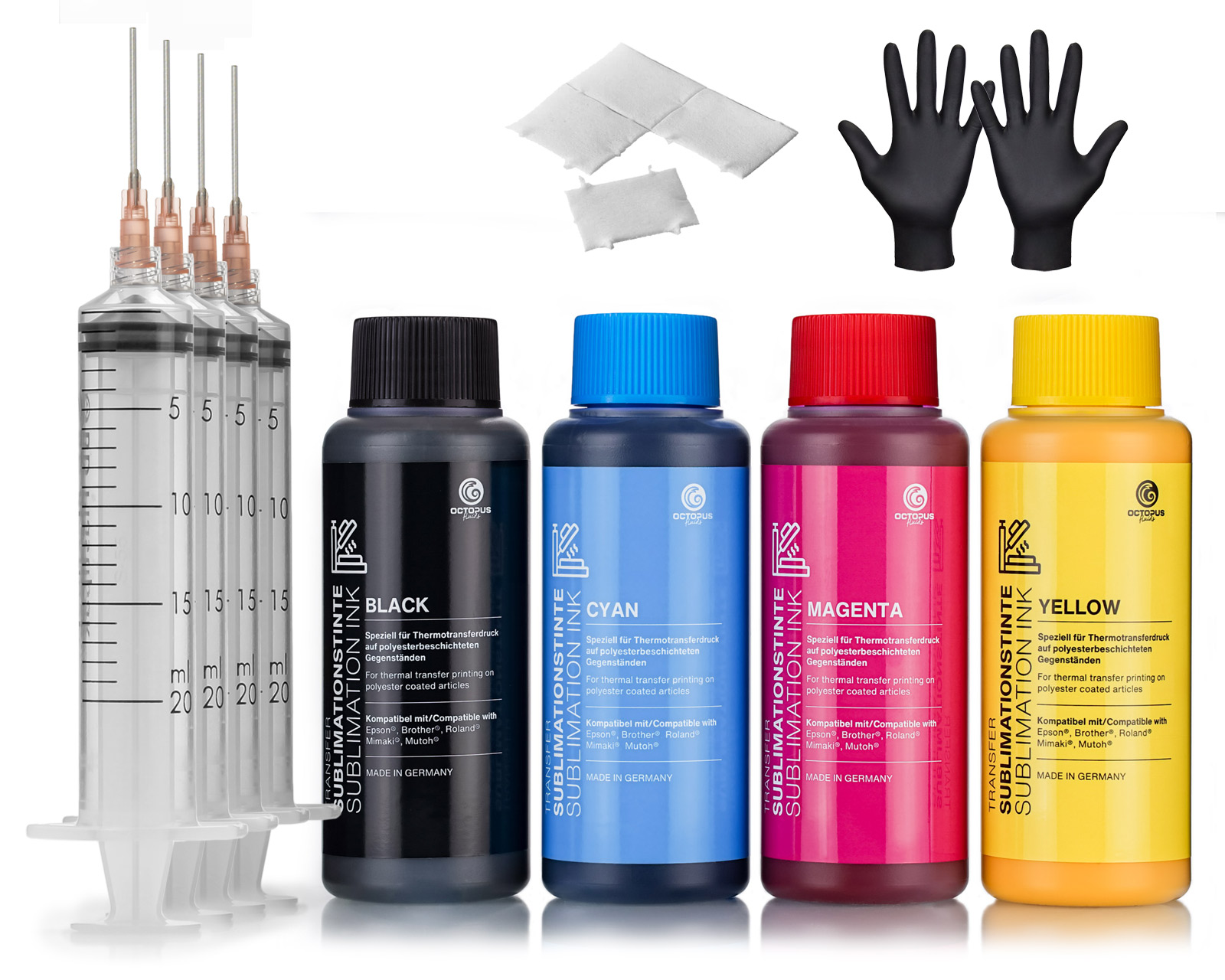 Sublimation ink for Epson, Brother, Roland, Mimaki, Mutoh, CMYK
Sublimation ink for Epson, Brother, Roland, Mimaki, Mutoh, CMYK
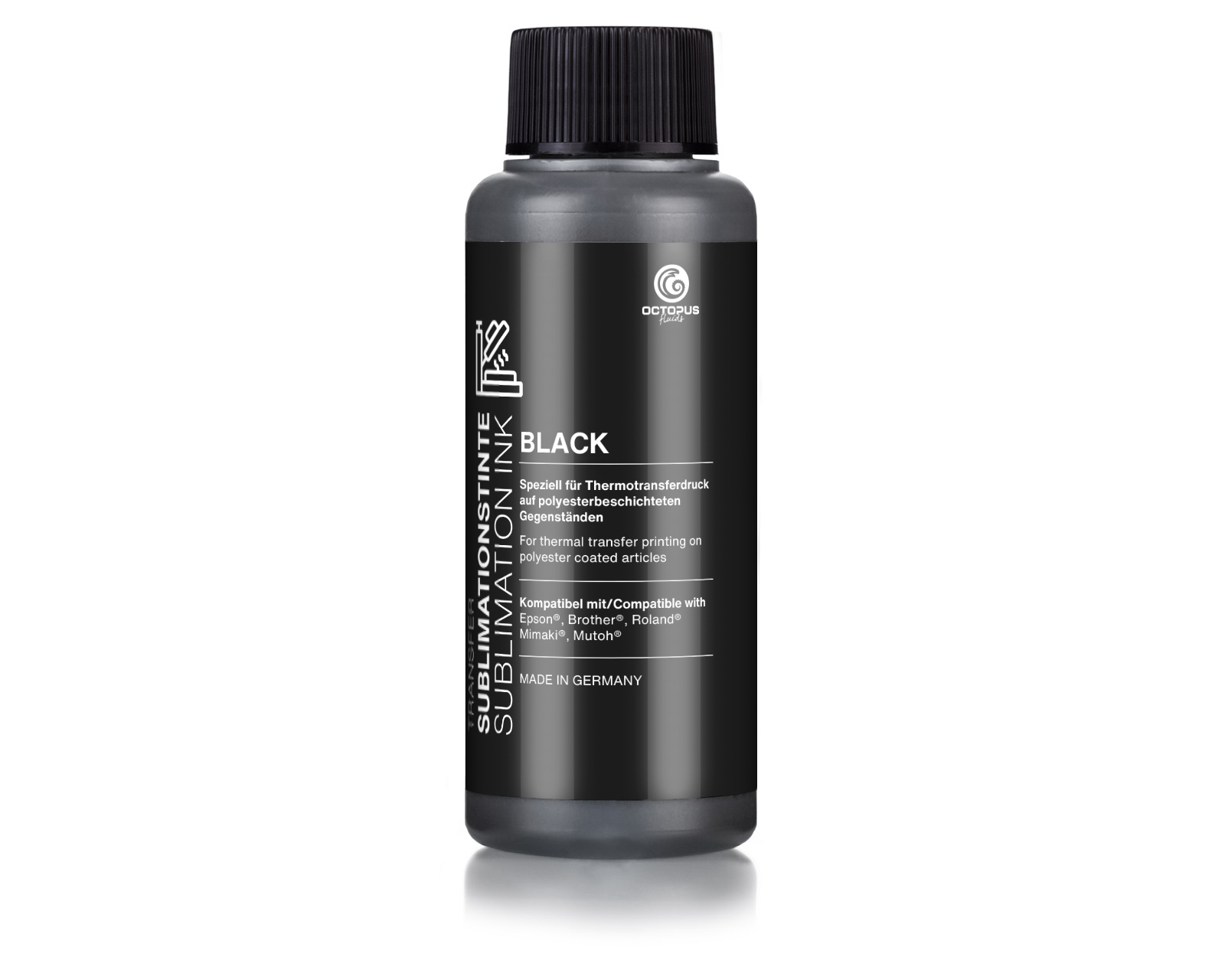 Sublimation ink for Epson, Brother, Roland, Mimaki, Mutoh, black
Sublimation ink for Epson, Brother, Roland, Mimaki, Mutoh, black
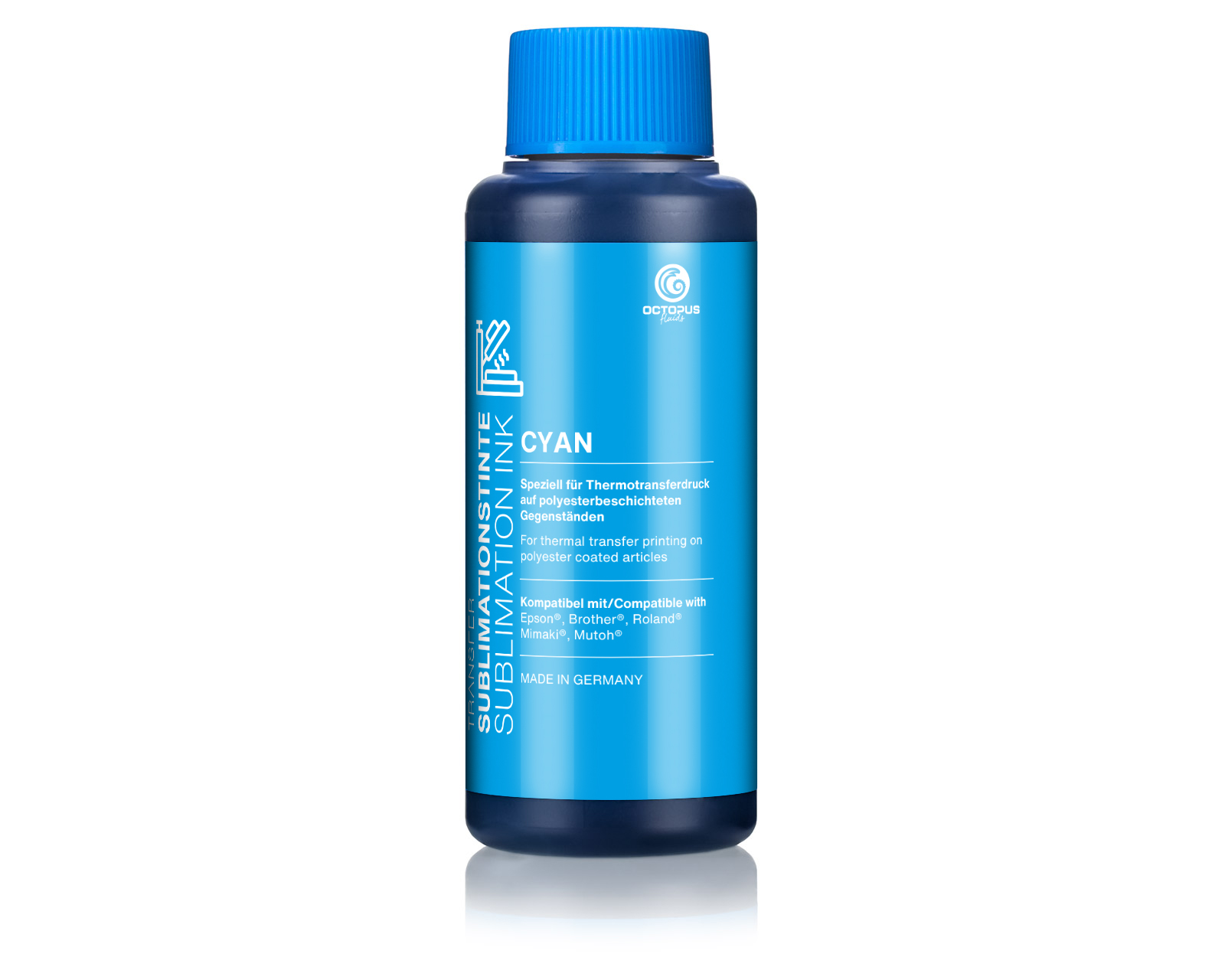 Sublimation ink for Epson, Brother, Roland, Mimaki, Mutoh, cyan
Sublimation ink for Epson, Brother, Roland, Mimaki, Mutoh, cyan







